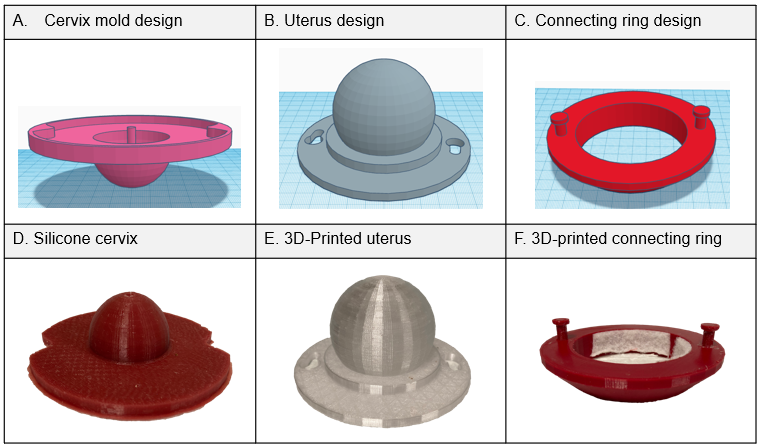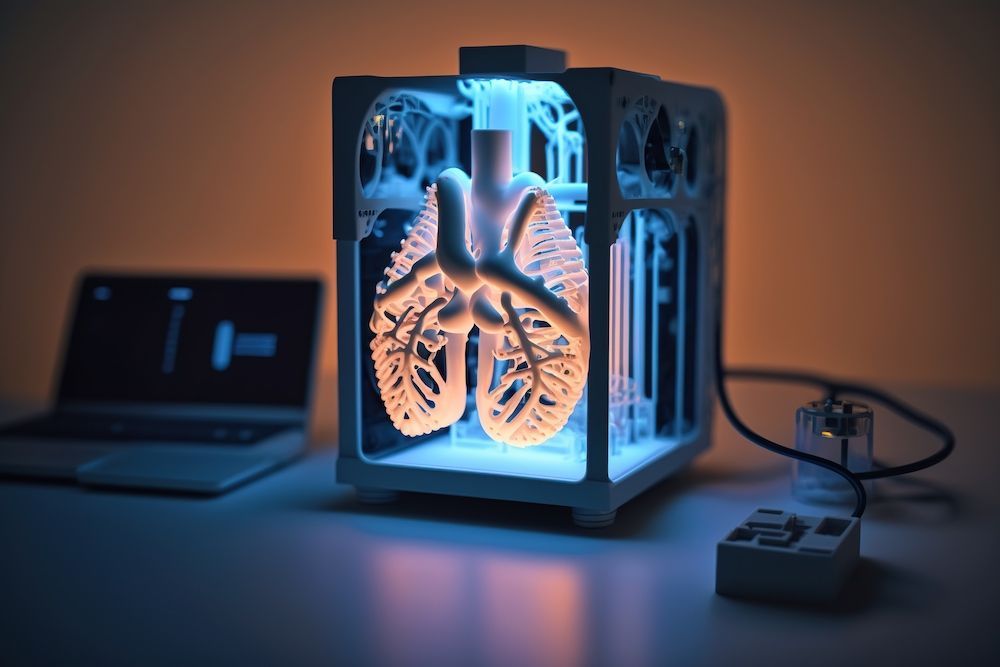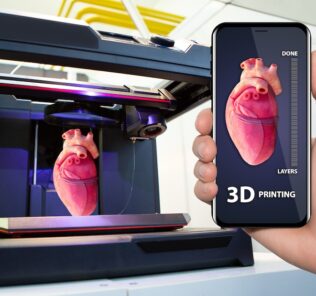Assessment of a Novel 3D-Printed Gynecological Task Trainer to Advance Medical Education Through Simulation
Effective medical education and training are paramount for developing competent health care professionals. Using low-cost, three-dimensional (3D) printed task trainers provides medical students and resident physicians with realistic and deliberate practice in gynecological procedures. This approach ensures a safe and effective environment for honing clinical skills, ultimately preparing health care professionals to deliver high-quality patient care(1, 2). Simulation training is particularly essential for early learners as they prepare for real-life patient procedures(3). This HealthySimulation.com article written by Jami Monico, MSEd, CHSE, and Karen S. Carlson, MD, FACOG will discuss how to develop and print a 3D gynecological task trainer.
The advent of 3D printing in the healthcare industry has elevated medical simulation education.(4) In the specialty of obstetrics and gynecology faculty members frequently teach medical students and residents through simulation.
View the LEARN CE/CME Platform Webinar 3D Printing for Healthcare Simulation: Advantages and Limitations to learn more!
Sponsored Content:
This novel task trainer builds upon the model described by Hellier et al.(2), which consists of a wooden base, polyvinyl chloride (PVC) tubing, and a PVC sanitary tee. The authors developed a versatile, realistic, reusable, and cost-effective gynecological task trainer to enhance the gynecological simulation sessions. Depicted in the image, a 3D design program to create three objects:
- A mold resembling an average-sized cervix, was used to create a soft, pliable cervix with a 2-part dyed silicone mixture (A and D). The outer ring allows the cervix to be placed between the uterus and the connecting ring.
- The uterus, designed to hold simulated tissue, features an outer ring and slots that accept pegs on the connecting ring (B and E).
- The connecting ring (C and F) facilitates swift assembly by connecting to the PVC pipe using hook-and-loop tape on the inside and linking to the outer ring of the uterus. This innovative task trainer provides a practical and efficient solution for comprehensive gynecological simulation training.
The components of the task trainer were crafted using a 3D printer, while additional parts were procured from a local hardware store. The silicone was purchased from an online distributor. With a budget-friendly cost of $15.38 per model, the task trainer provides an economical solution for medical simulation. Please see the detailed instructions linked below that include the 3D-print files. The accompanying image featured image of this article above displays A) the uterus, cervix, connecting ring, and PVC tee; B) the components assembled and secured on the tee; C) a view of the cervix through a speculum inside the PVC tee representing the vagina; D) the fully assembled task trainer. This visual representation provides a clear insight into the innovative design and functionality of the task trainer.

There are several characteristics of the 3D-printed components that have not been found in previous gynecologic simulation models. The uterus measures 8 cm from the cervix to the fundus, which is the same dimension as an average-sized human uterus(5). The uterus is designed to hold approximately 5 ounces of fluid. To simulate uterine tissue or contents, a gel composed of water, a thickening agent, and red food coloring is utilized. This formulation enables learners to retrieve simulated tissue when engaging in procedures such as endometrial biopsy and manual vacuum aspiration, thereby enhancing the simulation’s realism.
Sponsored Content:
Since creating silicone objects is time-consuming, multiple molds were created which allowed the crafting of multiple cervices simultaneously. The silicone cervix has a narrow opening through which instruments can be passed. A single-tooth tenaculum can be applied to the cervix to simulate stabilizing the uterus, a feature unique to this task trainer. The average human cervix measures 2.5 cm in length and 2.5 cm in width(6), and the silicone cervix designed has dimensions of 3 cm in length and 3.8 cm in width.
To gather diverse perspectives on the task trainer, evaluations were conducted among various groups of learners. The assessment focused on realism, completion of procedures, preparedness, learning enhancement, opportunity for using medical equipment, comfort levels, and solicited comments. An online survey with Likert-style questions and an open-ended query was devised for medical students, resident physicians, and clinicians at one medical center. Participants engaged in simulations encompassing a range of gynecological procedures using the task trainers, including Pap smear collection, cervical polyp removal, uterine sounding, endometrial biopsy, insertion and removal of intrauterine device, cervical dilation, and manual vacuum aspiration. Following each simulation session, learners provided feedback through the survey.
The survey findings underscored the task trainer’s efficacy in replicating real-life scenarios, adequately preparing learners for actual procedures, and providing valuable hands-on experience with medical instruments. Participants reported successful completion of gynecologic procedures during the simulation sessions, with data indicating that the task trainer contributed to an enriched learning experience, fostering increased comfort in executing procedures and potentially improving communication with patients.
Survey respondents overwhelmingly expressed positive feedback and noted that the task trainer is particularly well- suited for learners in the early stages of training. The complete report of findings is accessible on the UNMC Dept. of OB-GYN website.
The authors developed ten gynecological task trainers for use in classroom simulation sessions. Each task trainer accommodates two learners. Placed on protective pads alongside necessary medical equipment, these task trainers are used in faculty-led case-based learning sessions. In this image, family medicine residents are practicing gynecological procedures.
This cost-effective task trainer streamlines the replication of various gynecological procedures, offering enhanced learning opportunities. Its simplicity allows for easy replication. Tabletop placement allows use in group simulations. This approach proves highly efficient in delivering impactful and high-yield simulation sessions. The comprehensive report linked above of their quality improvement project, which evaluates the task trainer, is accessible on the UNMC Dept. of OB-GYN website. Additionally,detailed instructions on how to create the task trainer are available for reference.
Get the 3D Printed Designs Here!
References :
- Steinauer J, Preskill F, Robertson P. Training medical students in intrauterine procedures using papayas. Med Educ. 2007;41(11):1099-100.
- Hellier S, Ramponi D, Wrynn A, Garofalo S. An innovative approach: using simulation to teach primary care gynecologic procedures. Simul Healthc. 2017;12(4):268-73.
- Satin AJ. Simulation in obstetrics. Obstet Gynecol Clin North Am. 2018;132(1):268-73.
- Dodziuk H. Applications of 3D printing in healthcare. Kardiochirurgia i Torakochirurgia Polska/Polish Journal of Thoracic and Cardiovascular Surgery. 2016;13(3):283-93.
- Ameer M, Fagan S, Sosa-Stanley J, Peterson D. Anatomy, abdomen and pelvis: uterus. StatPearls. Treasure Island (FL)2023.
- Wildenberg J, Yam B, Langer J, Jones L. US of the nongravid cervix with multimodality imaging correlation: normal appearance, pathologic conditions, and diagnostic pitfalls. Radiographics. 2016;36(2):596-617.
Lance Baily, BA, EMT-B, is the Founder & CEO of HealthySimulation.com, which he started while serving as the Director of the Nevada System of Higher Education’s Clinical Simulation Center of Las Vegas back in 2010. Lance is also the Founder and acting Advisor to the Board of SimGHOSTS.org, the world’s only non-profit organization dedicated to supporting professionals operating healthcare simulation technologies. His co-edited Book: “Comprehensive Healthcare Simulation: Operations, Technology, and Innovative Practice” is cited as a key source for professional certification in the industry. Lance’s background also includes serving as a Simulation Technology Specialist for the LA Community College District, EMS fire fighting, Hollywood movie production, rescue diving, and global travel. He and his wife Abigail Baily, PhD live in Las Vegas, Nevada with their two amazing daughters.
Sponsored Content:


















